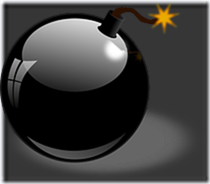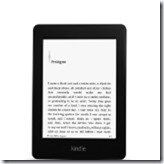Reviving Your Backlist Titles – Part 3
In addition to reformatting and updating the earlier titles to which you’ve received reversion of rights, will you do a full revision of the work? How long ago did you write it? If you decide to tighten the writing, here is a reminder of what to fix.

Remove those amateurish exclamation marks from your early writing days.
Motivate your characters with clear goals. Why is this goal important to him? What is he doing to make it happen? What’s stopping him? If he fails, what’s at stake? If your hero behaves a certain way, tell us what happened to influence this action. Don’t just have him lash out without rationalizing his attitude.
Keep description within the viewpoint of your character. Similes and metaphors should be within the protagonist’s frame of reference. Hairdresser: as limp as a strand of shampooed hair. Or: as tight as a newly permed curl.
When you’re in deep viewpoint, use pronouns rather than the character’s name. Keep viewpoints distinctive. Use a space break when you switch heads.
Avoid flashbacks and backstory. Leave the past in the past unless it’s important for your current story. Keep the action moving forward. Drop backstory into dialogue or relate it in brief thoughts during action scenes. Less is better.
Show, don’t tell. Show your character’s emotions. Don’t tell the reader about them. NO: She felt afraid. YES: Ice gripped her heart. NO: He was angry. YES: He slammed his fist on the table. Physical reactions and nonverbal clues indicate emotions. Without these, you’ve written a cardboard character.
Dialogue should have a purpose. All conversations should have direction. What’s the point you’re trying to make? Who needs to be in this scene? How will it propel the action forward?
Eliminate most substitutes for said along with adverbs that describes speech. NO: “I love it,” he chortled merrily. YES: “I love it,” he said with a chuckle.
Replace he/she said with character tags, but don’t overuse them. Make sure it’s clear who is speaking if there are several lines of dialogue without tags. Eliminate unnecessary tags altogether, like in this example:
His mouth curved in a suggestive smile that made heat rise to her face. “This potato-crusted grouper sounds good,” he said with a wink. “It comes with a salad and herb bread. Why don’t you order for me?”
In my revision, I removed “he said with a wink.” We already know who is speaking and he’d given a suggestive smile. No more is needed.
Avoid long paragraphs of exposition or description. Do these passages really need to be there? Or will readers skip over them? Make the reader feel what your hero feels. Don’t just tell us what’s going on. Also, if paragraphs get too long, split them up. White space is a good thing.
Replace passive verbs with active tense. NO: The slaves were slain by lions. YES: Lions mauled the slaves. NO: His forehead was heated by the sun baking overhead. YES: The baking sun heated his brow.
Replace walked and went with a more visual word. She shuffled toward the door. He raced down the street. He sprinted across the yard.
Watch those “ing” phrases. Make sure your subjects match: NO: Glancing into the rearview mirror, her breath released upon noticing the coast was clear. YES: Glancing into the rearview mirror, she released a breath upon noticing the coast was clear.
Beware of ing phrases that are illogical. NO: Flinging the door wide, she stepped inside the darkened interior. YES: She flung the door wide and stepped inside the darkened interior (i.e. you can’t do both actions at once in the first sentence).
Avoid weak phrases like seemed to, tried to, began to. NO: He seemed to want her input. YES: His smile encouraged her to speak. NO: She tried to tie the knot, but it slipped through her fingers. YES: As she fumbled with the knot, the rope slipped from her fingers. Avoid unnecessary phrases such as she realized, she figured, he decided, he watched.
Avoid weak verbs: is, was, are, were, there was. NO: There was water on the window. YES: Water droplets beaded the window. NO: His pulse was racing. YES: His pulse raced.
Delete redundancies. NO: sat down YES: sat. NO: He thought to himself. YES: He thought. NO: Climbed up YES: Climbed
Check for repetitions: Most of us subconsciously overuse a favorite word. Be alert for these when you read through your manuscript. Avoid the same phrases or words in consecutive pages. Watch out for repeats of the same information in conversations or in a person’s thoughts. As an example, note the word “hoping” used three times in this same paragraph. Oops. This excerpt is from my current Work in Progress.
Hoping to learn more, she focused on what she already knew. “Mr. Ripari was hoping to sell the property. Did you know it had been a pioneer theme park back in its earlier days? He was hoping to turn the house into a living museum. I understand there’s some controversy involved.”
Needless to say, I’ve revised this paragraph.
Remove qualifiers such as: very, rather, quite, really, just, awfully. NO: I remembered that she was really nice. YES: I remembered how her smile lit the room. NO: It was very hot. YES: The heat made my skin itch. One of my favorites is “only.” Vary this one by using “merely” or “simply” or eliminate it altogether.
Beware of flying body parts.NO: Her eyes flew across the room. YES: Her gaze flew across the room. NO: She threw her hands in the air. YES: She raised her arms. NO: Her eyes floated above the crowd. YES: She surveyed the crowd.
Be specific: NO: She passed a clump of flowers. YES: She passed a clump of red tulips sprouting from the ground like supplicating hands. NO: It had been a hard day. YES: Her body sagged as though she’d run a marathon (cliché alert?).
Learn correct spelling: their or they’re; it’s or its; lay or lie; you’re or your. They’re means they are. It’s means it is. You’re means you are.
Be consistent: If you’ve written a series, make sure you are consistent with particular words. Moustache or mustache? Chardonnay or chardonnay? Duffle or duffel? Nightstand or night stand? Think about creating a style sheet so you can have a handy reference for these types of words.
Avoid clichés like the plague. If you spot one during revisions, go back and replace it with something more original. NO: He wore a scowl like a cloak. YES: He wore a scowl like a seasoned samurai.
Go for strong endings at ends of sentences. Don’t end sentences on a preposition. NO: I didn’t know what he was waiting for. YES: I didn’t understand why he waited. NO: He stared in horrified dismay at her. YES: He stared at her in horrified dismay.
Be aware of series continuity. Now that you know where your series is going, you can correct any inconsistencies along the way, plant a hint for something to come, or add/verify the ages and dates when things occur in your characters’ lives.
In conclusion, reword sentences so they’re stronger. Eliminate needless drivel. And make your book the best it can be out of respect for your readers. You want your work to shine so you can be proud of it all over again.
Read earlier post on Reviving Your Backlist Titles – Updating the Work
Read earlier post on Reviving Your Backlist Titles – Manuscript Preparation




























